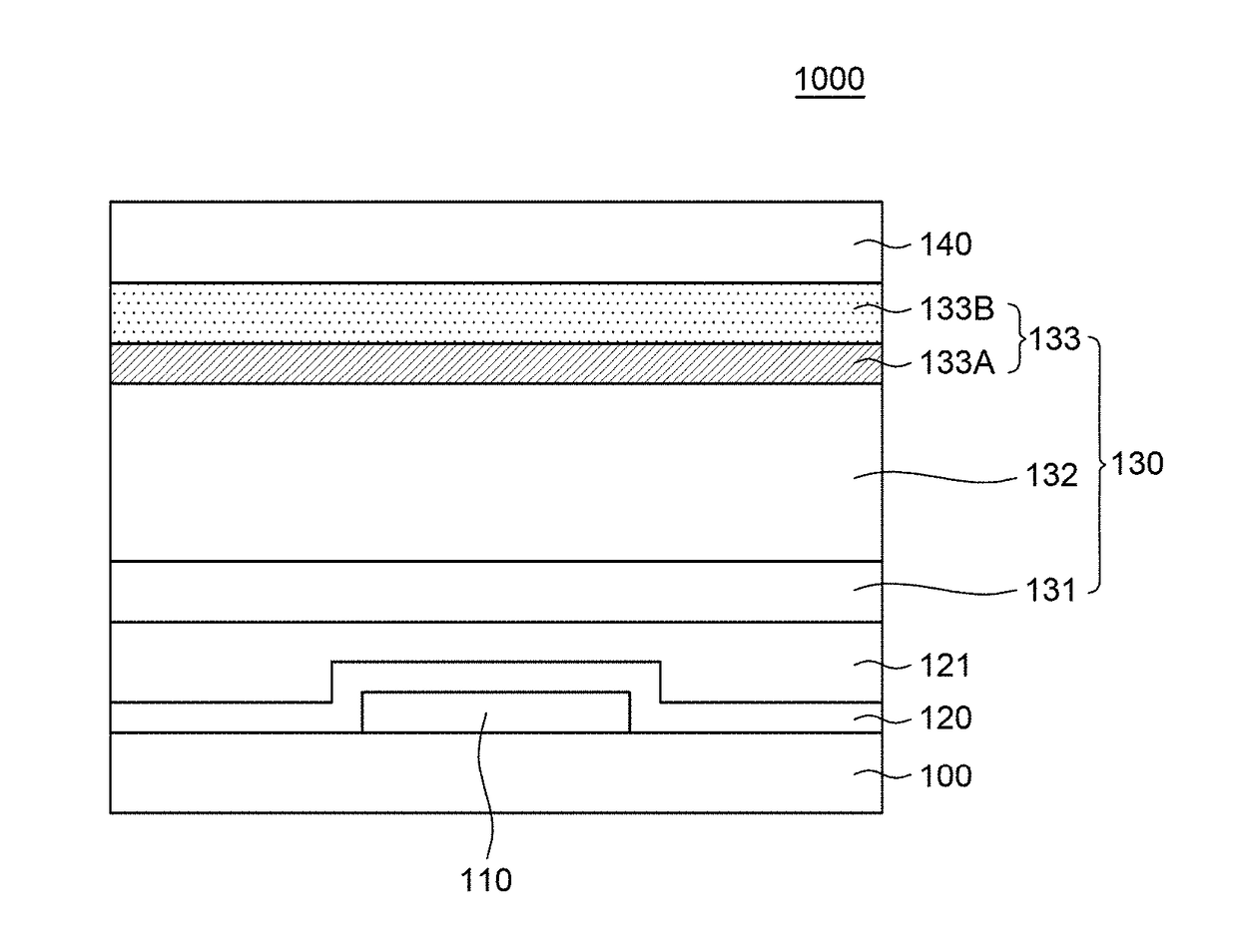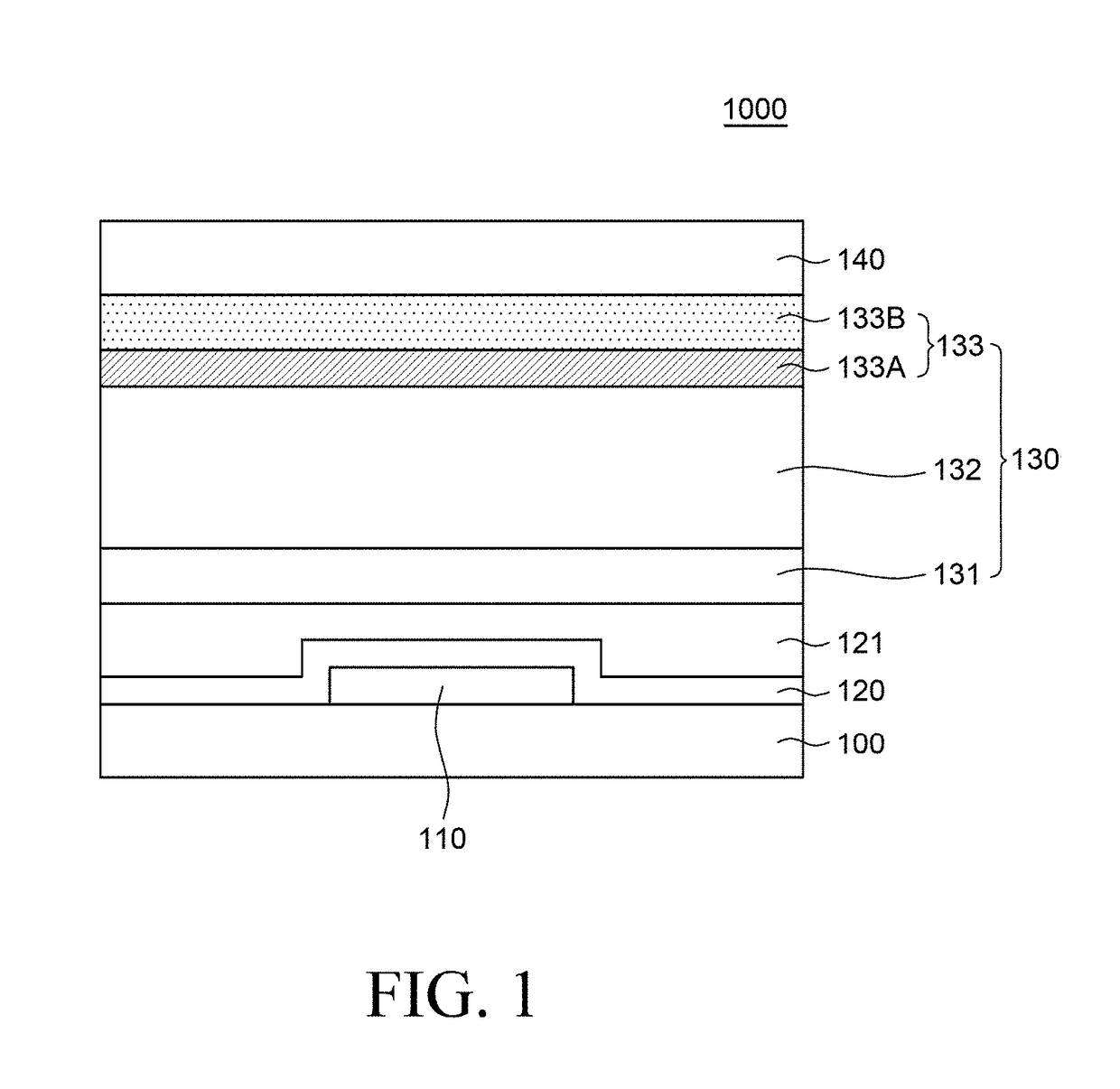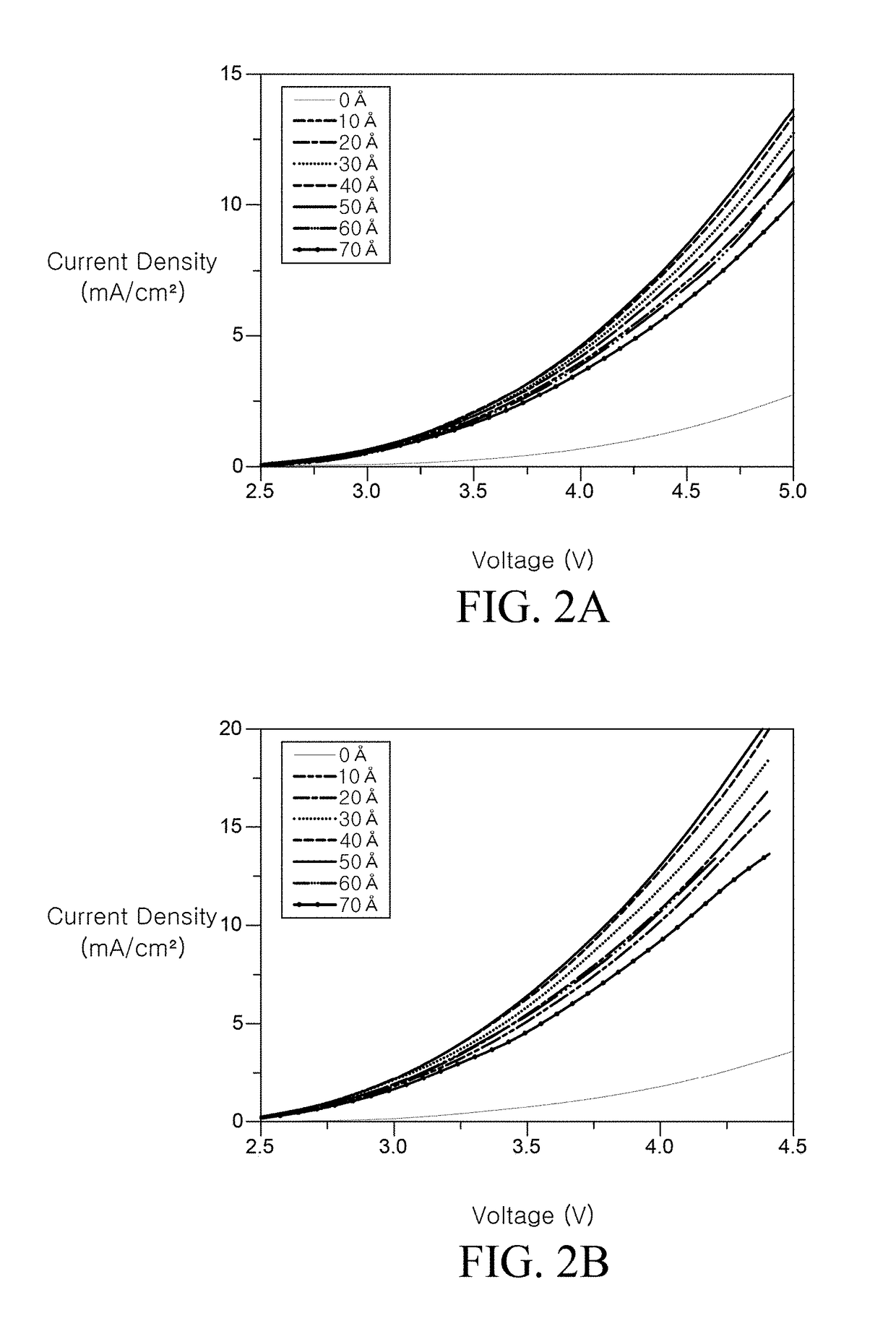Organic light-emitting element and display device having the same
a technology of light-emitting elements and display devices, which is applied in the direction of organic semiconductor devices, solid-state devices, semiconductor devices, etc., can solve the problems of reducing the micro-cavity resonance effect, and achieve the effect of improving the efficiency and reducing the efficiency drop and improving the lifespan of the organic light-emitting elemen
- Summary
- Abstract
- Description
- Claims
- Application Information
AI Technical Summary
Benefits of technology
Problems solved by technology
Method used
Image
Examples
first embodiment
[0048]FIG. 1 is a cross-sectional view of an organic light-emitting display (OLED) device according to the present disclosure.
[0049]The OLED device 1000 includes a substrate 100, an organic light-emitting element 130 disposed on the substrate 100, and an encapsulation layer 140.
[0050]A driving circuit 110 for driving the organic light-emitting element 130 may be disposed on the substrate 100. The driving circuit 110 may include a transistor, a capacitor, etc. The driving circuit 110 may be formed in each of a plurality of sub-pixels formed on the substrate 100. The source electrode or the drain electrode of a transistor may be connected to the anode 131 of the organic light-emitting element 130 to transmit a driving signal to the organic light-emitting element 130.
[0051]The substrate 100 serves to support and protect various elements of the OLED device. The substrate 100 may be formed of an insulating material, and may be formed of, for example, glass, polyimide, acryl, polyacrylate...
second embodiment
[0085]FIG. 6 is a cross-sectional view for illustrating influence on an organic light-emitting element in an OLED device according to the present disclosure when it is exposed to UV light.
[0086]FIG. 6 illustrates a stack structure of layers from the cathode 133 to the encapsulation layer 140 among the layers of the OLED device 1000 of FIG. 1. Therefore, the redundant description will be omitted.
[0087]Referring to FIG. 6, a first cathode 133A of the cathode 133 may be disposed on a second cathode 133B. The encapsulating layer 140 may be disposed on the cathode 133, such that it is possible to reduce permeation of moisture, oxygen, etc. from the outside into the organic light-emitting element.
[0088]In addition, a capping layer 150 may be disposed between the cathode 133 and the encapsulation layer 140. The capping layer 150 may cover the cathode 133 of the organic light-emitting element to reduce oxygen and moisture introducing from the outside, and may attach the organic light emitti...
PUM
 Login to View More
Login to View More Abstract
Description
Claims
Application Information
 Login to View More
Login to View More - R&D
- Intellectual Property
- Life Sciences
- Materials
- Tech Scout
- Unparalleled Data Quality
- Higher Quality Content
- 60% Fewer Hallucinations
Browse by: Latest US Patents, China's latest patents, Technical Efficacy Thesaurus, Application Domain, Technology Topic, Popular Technical Reports.
© 2025 PatSnap. All rights reserved.Legal|Privacy policy|Modern Slavery Act Transparency Statement|Sitemap|About US| Contact US: help@patsnap.com



